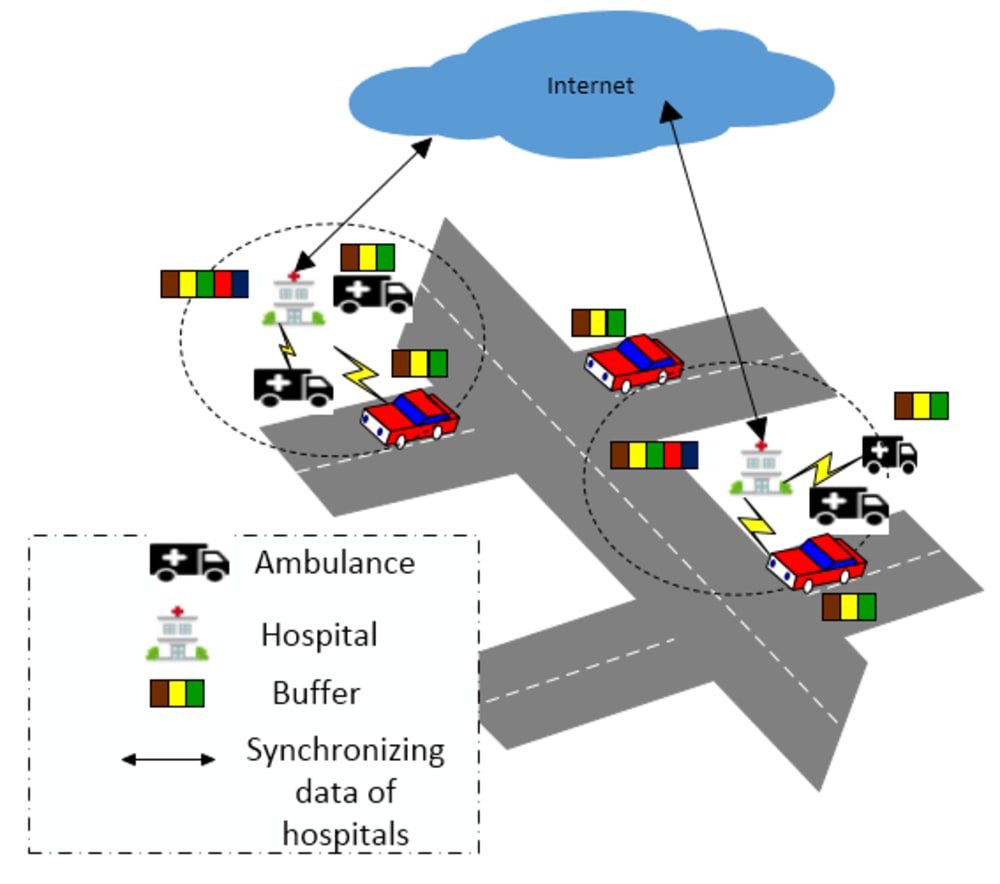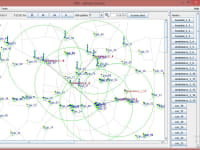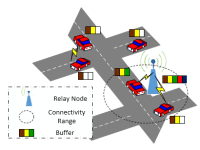Abstract:
The growing size of cities and increasing population mobility have determined a rapid increase in the number of vehicles on the roads, which has resulted in many challenges for road traffic management authorities in relation to traffic congestion, accidents, and air pollution. The most important consequence of traffic congestion is the delay of emergency services, such as police, fire and rescue operations, hospital services. Indeed, very often individual human lives, general population safety and institutional economic or financial situation, highly depend on the efficient and timely response of emergency vehicle services. We propose a solution to improve the response of emergency services in congested city areas as well as in remote places which lack cellular network connectivity. The simulations are carried out using Opportunistic Network Environment (ONE) Simulator using the map of Pune, India, for the analysis purpose. We evaluate the performance of the proposed scheme with respect to various performance metrics, like average latency, average buffer time and overhead ratio, with varying number of nodes (vehicles). The results show a good improvement in average buffer time and latency measures of messages. Thus, the proposed work intends to help the commuters by improving the existing state of emergency services in the city.
The highly successful architecture and protocols of today’s Internet may operate poorly in environments characterized by very long delay paths and frequent network partitions. These problems are exacerbated by end nodes with limited power or memory resources. Often deployed in mobile and extreme environments lacking continuous connectivity, many such networks have their own specialized protocols, and do not utilize IP. To achieve interoperability between them, a network architecture and application interface structured around optionally-reliable asynchronous message forwarding, with limited expectations of end-to-end connectivity and node resources called Delay Tolerant Network (DTN) was proposed. The architecture operates as an overlay above the transport layer of the networks it interconnects, and provides key services such as in-network data storage and retransmission, interoperable naming, authenticated forwarding and a coarse-grained class of service.
Proposed Work:
When a node (vehicle) encounters an accident, the people inside it or the passers-by can trigger an event (considering the situations under which the node may get damaged, we do not propose an automatic method for generating event messages (EMs) ) by creating a message which contains location of the event, thus acting as event generator .
Sequence of steps are required for taking action on EM. We record the simulation time at which this message was received by the hospital node, so that two messages being received at same time can be served better. All the hospital nodes then collaborate among themselves to find one node from which the ambulance will be dispatched for the event to be served. Ambulance is sent from a hospital node which is nearest to the event location.
Like this entry?
-
About the Entrant
- Name:Harita C
- Type of entry:individual
- Software used for this entry:Opportunistic Network Environment Simulator: a Java-based simulator specifically designed for Delay Tolerant Networking
- Patent status:none








